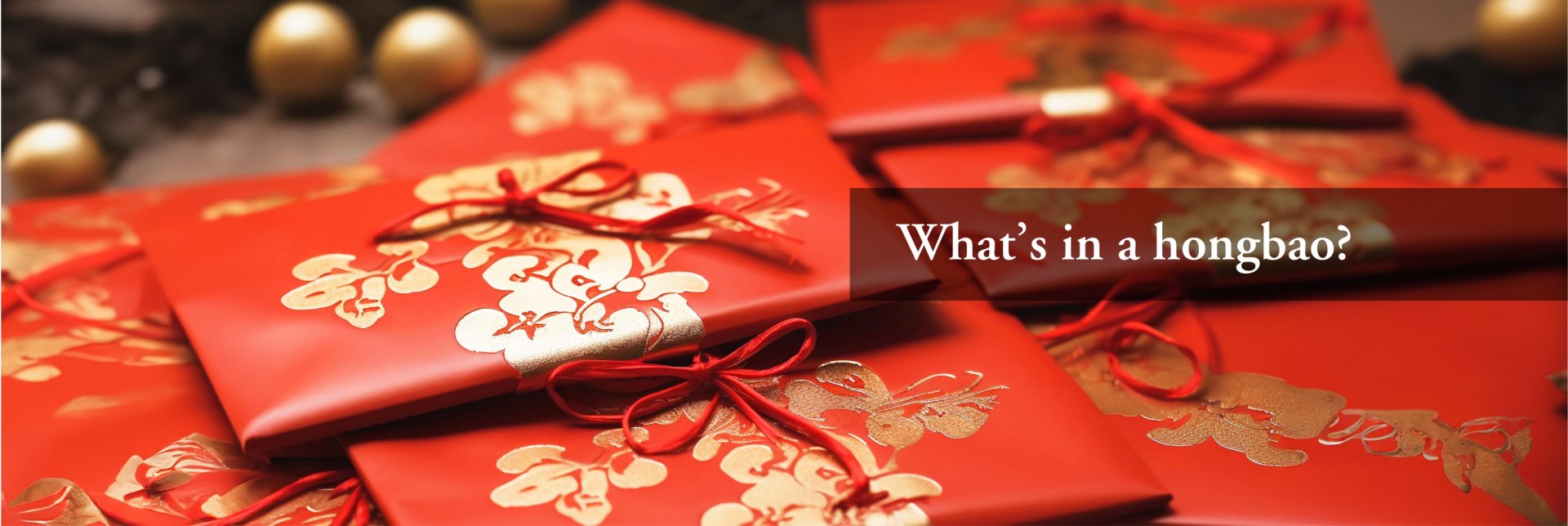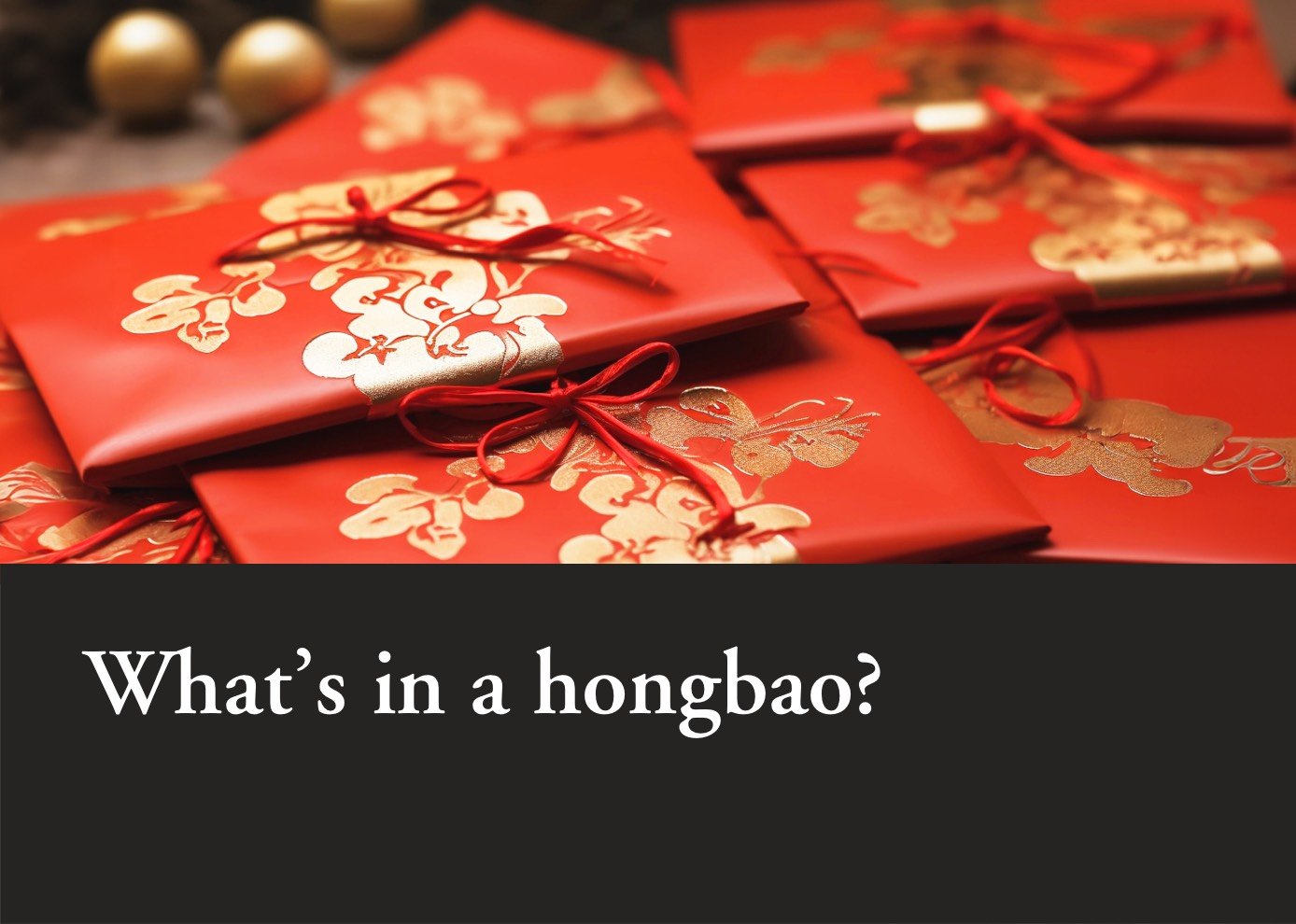What’s in a hongbao?
The Spring Festival, also known as the Chinese New Year (CNY) or Lunar New Year (LNY), is the most solemn and celebrated among traditional Chinese festivals. During the festival, in addition to sharing their joy with their loved ones at the table of lavish meals, the foremost custom for people to follow is to offer (or exchange) hongbao (red packets or red envelopes) filled with money. For the Chinese people, giving hongbao represent sending out their warmest wishes, including good luck, good wealth, good health, care and love, harmony and prosperity, etc.
Hongbao is called “lai see” by Cantonese people. It is a gift, symbolizing the of the sender’s affection, and the money included in it should not matter at all. But is this really the case? It must be acknowledged that the practice and the meaning of this simple but formal ritual has changed fundamentally in recent years, especially with the development of its electronic version (e-hongbao).
(1) Its origin
The origin of hongbao is unclear. Some scholars trace its origin to the Song Dynasty; others even earlier, to the Han dynasty, when coins inscribed with auspicious words like “long live” or “dispel the demon” or with animal patterns like the dragon or turtle were exchanged as talismans, but it remains difficult for people to link this practice to the gift of hongbao. More convincing evidence of handing over hongbao was provided in 1865 by the Rev. Justus Doolittle (1824-1880) in his book Social Life of the Chinese. The author does not specifically mention hongbao or ya sui qian (originally, money that can suppress the demon; now, money given to children by their elders) but describes the tradition of tying copper coins by a red string to be given by the head of the family to servants, children, nephews, and nieces – the red string symbolizing, as the red packet now, joy. As it still happens, the money was often spent on candies or sweet meats. The author does not describe the complicated ritual long practised until recently, which is still presented in Chinese books for kids – children have to kowtow (the act of deep respect shown by prostration, i.e., kneeling and bowing so low as to have one’s head touching the ground) to their smiling parents or grandparents before receiving the gift. In recent years, the ritual has been greatly simplified, involving only a light bowing.

(2) Its connotations
The ritual and its practices, especially in their original, complicated forms, represent symbols deeply entrenched in Chinese culture. The kowtowing (and even the bowing) is designed to show filial piety and deference from the children. The gift as well as the light smile on the face of the parents/grandparents, indicate love and benevolence – all the most important values inherited from Confucianism. This reciprocity highlights the existence of ganqing (affection). And the gift itself, being held at the same time by the giver and the receiver face to face, shows the connection and intimacy between different generations. As such, the hongbao is usually not returned, and the counter-gift is then delayed until the children themselves give birth to their own children and continue the tradition.
In this context, conceptually, the money enclosed in the red packet should not matter much. First, it is common knowledge that the packet encompasses the wishes of good luck, good health, harmony and the like. Second, for many receivers, it is considered differently than just money, being kept sometimes for a few months and/or for a specific usage (e.g. as a lucky charm throughout the year). And more importantly, it also symbolizes the gift of life from the parents – a gift that can never be extinguished. But in reality, while keeping this meaning, the development of an electronic version has considerably altered this original function.

(3) Its functions
It is also in the above-mentioned generational transmission, as well as in its universal practice within the Chinese community, that hongbao-giving transcends the family setting. As noted by Roger Ames, a famous sinologist specialized in Confucianism, one’s ritual practice begins from a ritualized devotion to the family and lineage and then extends to sacralize one’s roles and relations in community more broadly. Hence, the universal practice of handling hongbao symbolizes social harmony – a core Confucianist value, now rejuvenated in China. In this way, giving hongbao is both a way to cement family and community relationships – a sign of cultural belonging. This universal practice during the CNY is what differentiates the hongbao given during the Spring Festival from that given on other occasions, like weddings or birthday parties.

(4) Its evolution
The introduction of an electronic version by WeChat has altered the significance or the original meaning of hongbao in two different but related directions: individualization, and economic functions. The intertwining of economic practices into the CNY rituals is nothing novel. For instance, there are employers who would like to give hongbao to their domestic helpers only when they resume work after the CNY holiday so as to entice them to not to change their job after the Festival. But WeChat went much further. During the 2015 Spring Festival Gala held by the CCTV, 36 million red packets were distributed out of the 800 million people who watched the show. This blurred the lines between gift and business, and between tradition and economy. In addition, the ephemeral nature of the e-hongbao implies that the money is immediately “recycled” into the bank account of the receiver, losing very quickly its “magic appeal” (e.g., the sense of mystery, the feeling of excitement, etc.), especially for the children who do not have a bank account and cannot hold the packet in their own hands. In addition, having the possibility of sending hongbao at their fingertips allows people to send that on any occasion, such as when asking for service. No wonder Zhang Xiaolong, the “father” of WeChat himself, noticed that sending and receiving hongbao has then become a pure, monetary transaction and so the addition of emojis and later on, short videos, can be understood as a means of WeChat to address this problem.
But in doing so, the ritual itself or the ritual sense of hongbao has been replaced by a number of individual practices. It is because, instead of sticking to the traditional practice of giving out hongbao within the family or a designated group, accompanied at the same time by sincere blessings and bowing, people send out their own messages, emojis, videos and so on freely, while the Confucian values of filial piety and benevolence then tend to be replaced by individual wishes or, enven, by the “gamification” of hongbao.
Of course, e-hongbao can spread far and wide, so that global families and circles of friends can send red envelopes in a timely manner, to convey their love or affection from afar. While this new practice may help enhance solidarity among the members of the groups as people can now distribute red packets very easily within family members, groups of colleagues or friends, it is also clear that it has departed from the original ritual and tradition, making itself lose part of its very contents and significance. This may be one reason why Hong Kong people, as well as Malaysian Chinese, still prefer to use physical red envelopes.

< 原創文章/視頻,未經許可,不得轉載 >




Welcome to leave a message:
Please Sign In/Sign Up as a member and leave a message